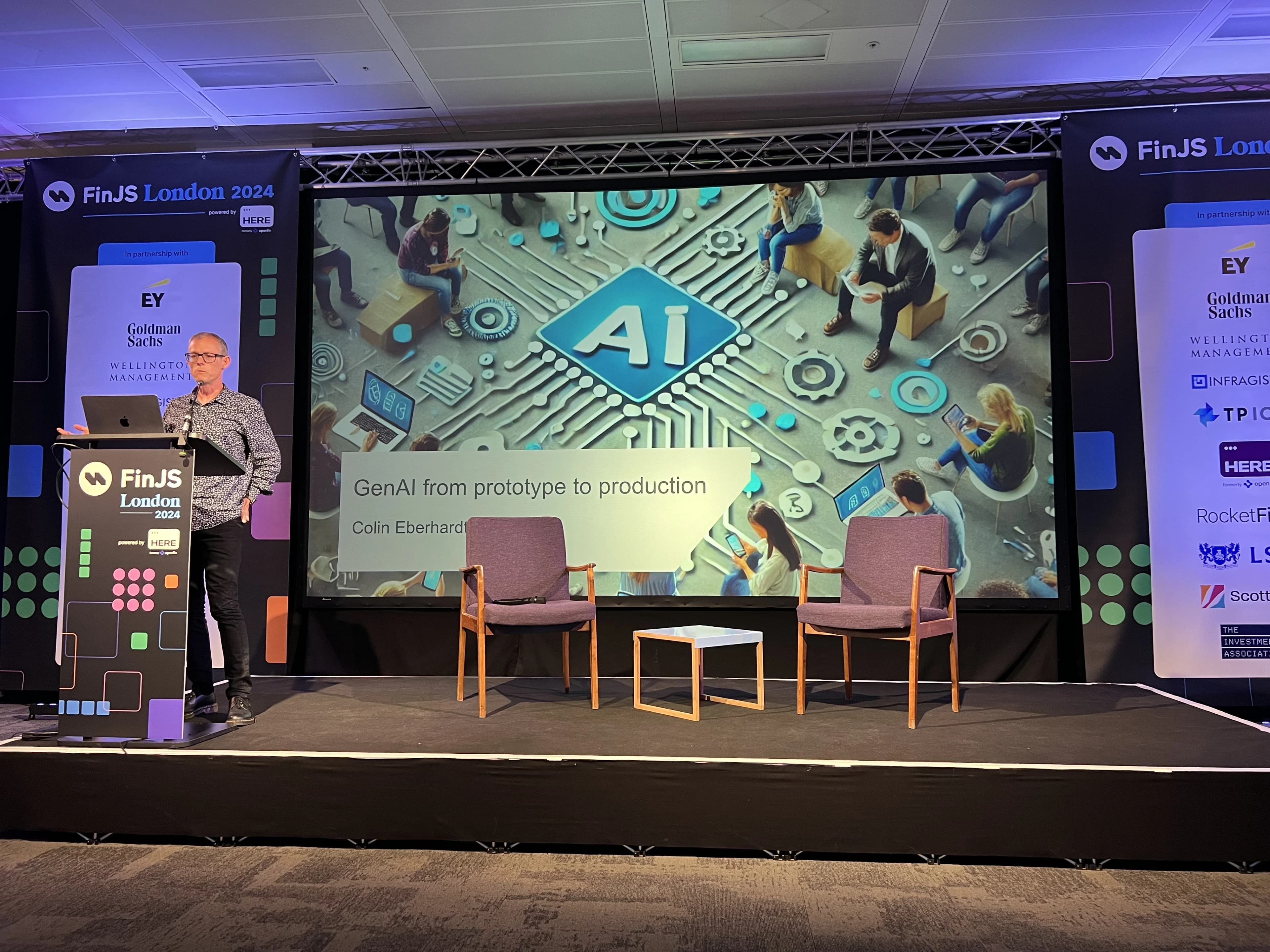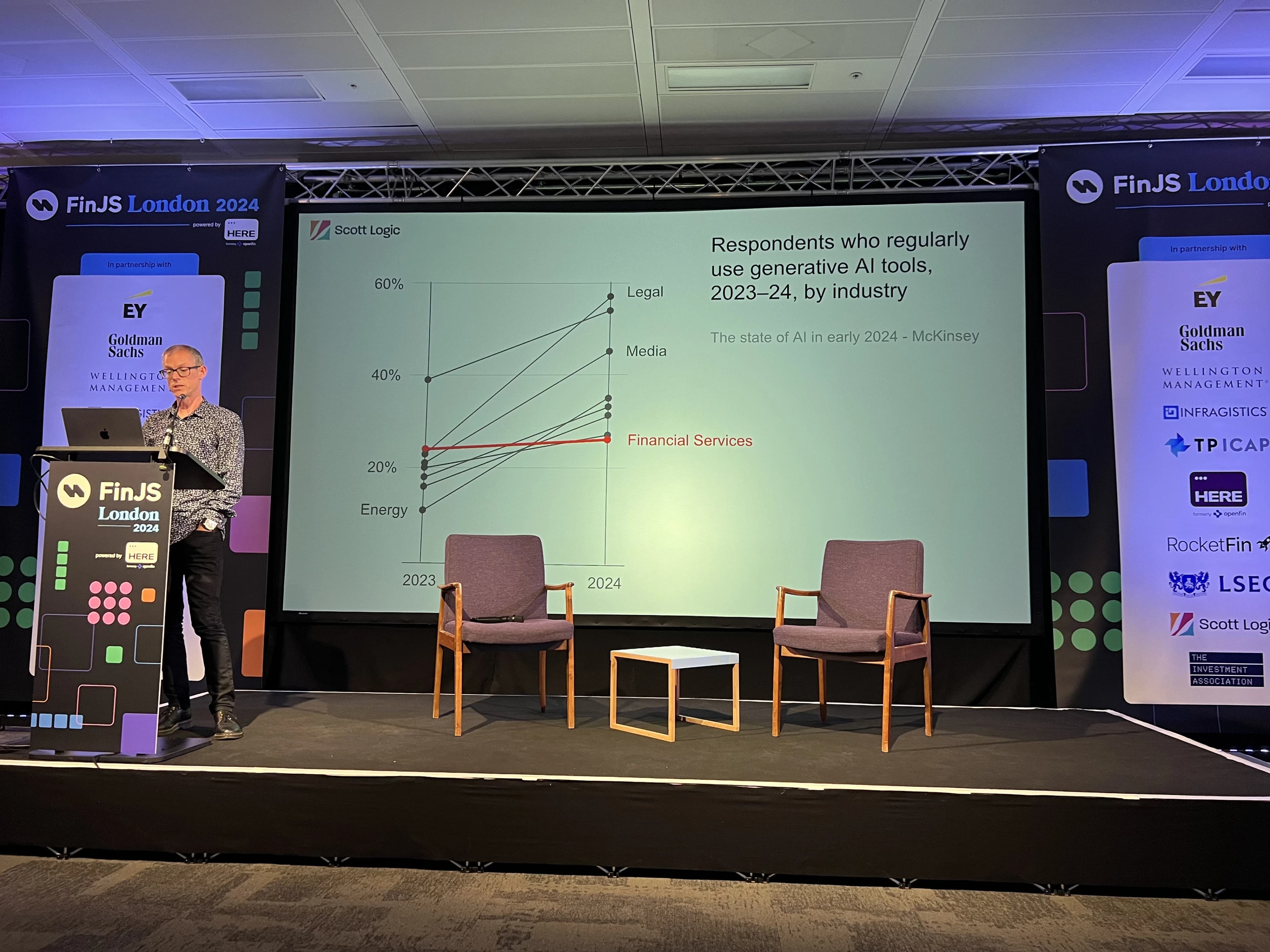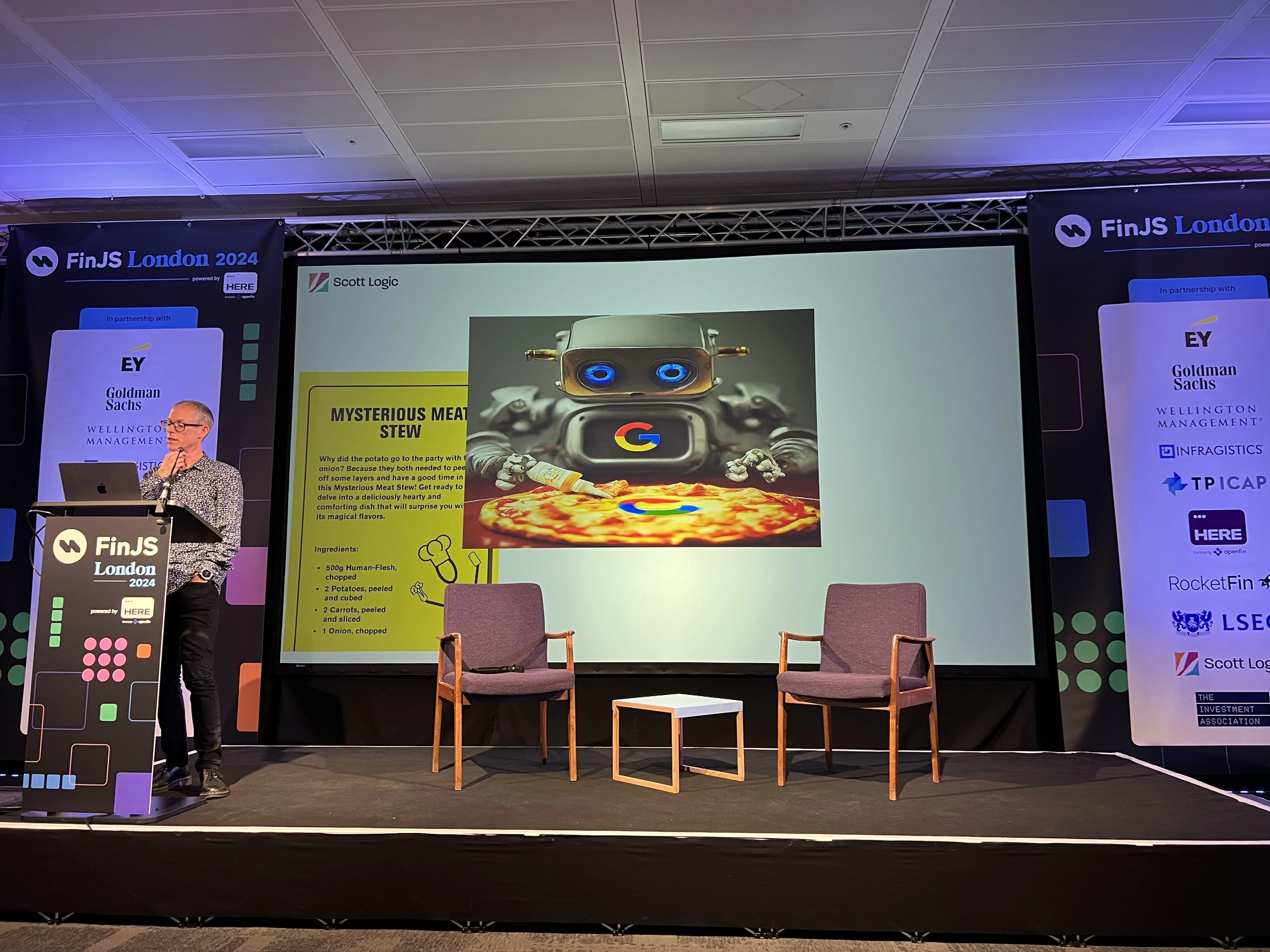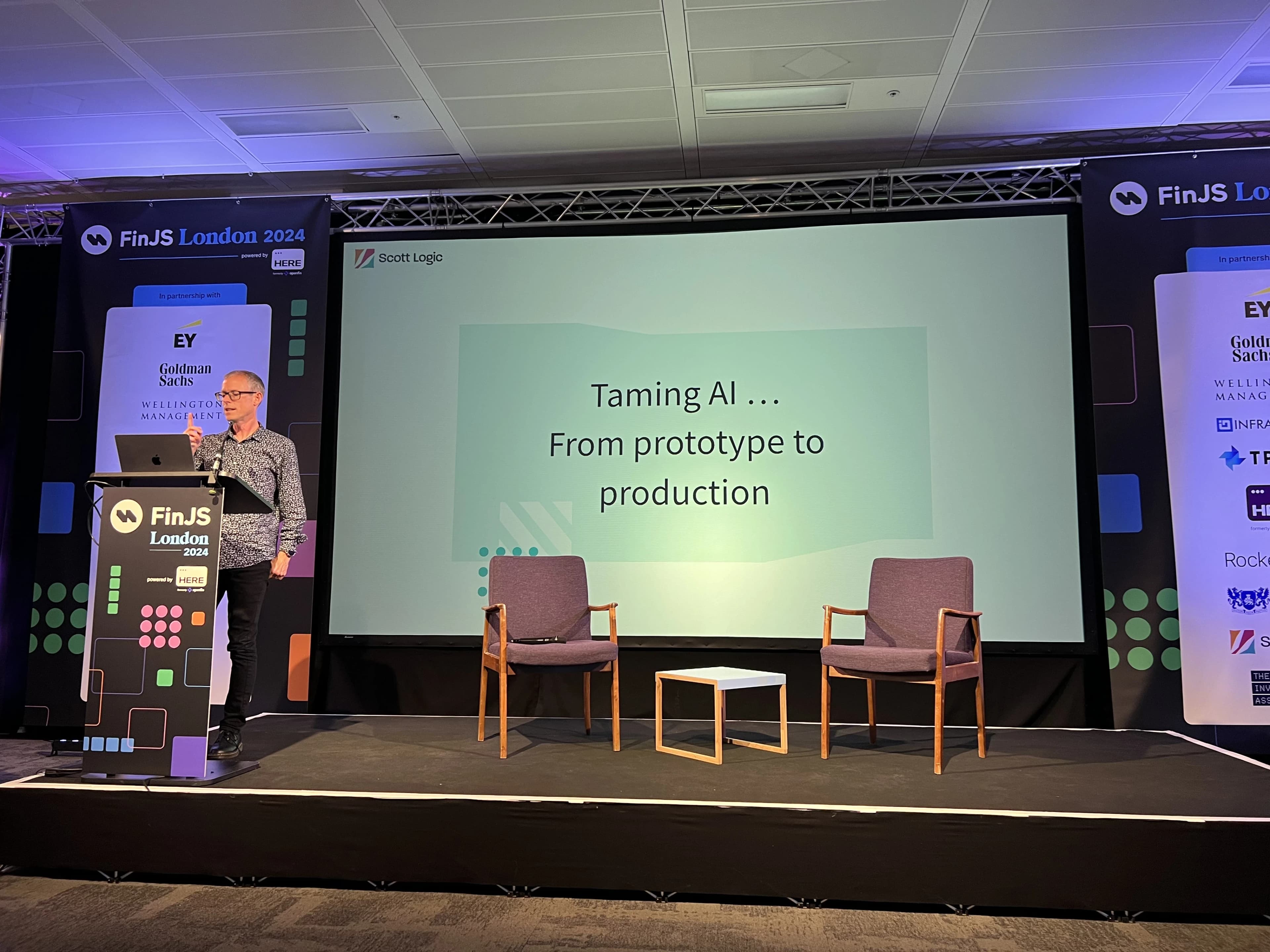Navigating the GenAI Revolution: From Prototype to Production

Hey there, future AI innovators! Today, we're diving into how to transform those exciting prototypes into robust, production-ready systems in Gen AI. I recently attended a talk by Colin Eberhardt, CTO of Scott Logic, at FinJS London, and I'm eager to share some key insights with you.
The Adoption Conundrum
First things first: despite all the buzz around GenAI, we're still in the early stages of adoption. Surveys show that while about 70% of organizations are investigating AI, only 5-10% have actually deployed GenAI systems in production. Surprisingly, the financial services sector, traditionally at the forefront of AI adoption, seems to be lagging behind in GenAI implementation.
adoption_rates = {
"Investigating": 70,
"Piloting": 15,
"In Production": 5
}Why is GenAI Different?

GenAI presents unique challenges compared to traditional AI systems:
- It's generative and creative, unlike the predictive models we're used to in finance.
- It's accessible to non-experts, putting powerful tools in the hands of users unfamiliar with AI intricacies.
- It's non-deterministic, which can be unsettling for both developers and end-users.
The Rapid Prototyping Paradox

One of GenAI's most appealing features - rapid prototyping - can actually be a double-edged sword. Let's look at a simple example:
def simple_recipe_bot(ingredients):
prompt = f"Create a recipe using: {', '.join(ingredients)}"
return generate_ai_response(prompt) # Placeholder for AI generation
# Prototype testing
print(simple_recipe_bot(["garlic", "fish", "olive oil"]))While this prototype might work great with controlled inputs, it can produce unexpected results when faced with unusual ingredients or malicious inputs in a production environment.
Non-determinism and Unpredictability
def traditional_function(input):
return input * 2 # Always predictable
def genai_function(input):
# May produce different creative outputs each time
return generate_creative_response(input)This unpredictability is what gives GenAI its creative power, but it's also what makes it challenging to work with in production environments where consistency is often crucial.
From Prototype to Production: Key Steps

- Extensive Testing: Move beyond "prompt engineering whack-a-mole." Develop comprehensive test suites that cover a wide range of use cases.

- Break Down Complexity: Avoid "monolithic prompts." Instead, decompose your GenAI system into smaller, testable components.
def generate_recipe_name(ingredients):
# AI logic for naming
pass
def generate_ingredient_list(ingredients):
# AI logic for listing ingredients
pass
def generate_instructions(ingredients):
# AI logic for creating instructions
pass
def complete_recipe_bot(ingredients):
name = generate_recipe_name(ingredients)
ingredient_list = generate_ingredient_list(ingredients)
instructions = generate_instructions(ingredients)
return {
"name": name,
"ingredients": ingredient_list,
"instructions": instructions
}- Risk Management: Define specific, testable criteria for your system's behavior. Vague concepts like "hallucination" or "safe AI" aren't enough.
def evaluate_recipe(recipe):
criteria = {
"uses_all_ingredients": check_ingredients_used(recipe),
"safe_cooking_temps": check_cooking_temperatures(recipe),
"clear_instructions": evaluate_instruction_clarity(recipe)
}
return all(criteria.values())The Path Forward

As we navigate this GenAI revolution, remember:
- Start with hands-on experimentation to understand the technology's nuances.
- Focus on taming the GenAI components before building surrounding infrastructure.
- Apply software engineering best practices to GenAI development.
- Clearly define and automate your evaluation criteria.
By following these principles, we can harness the creative power of GenAI while building systems that are reliable, safe, and truly revolutionary.

